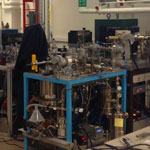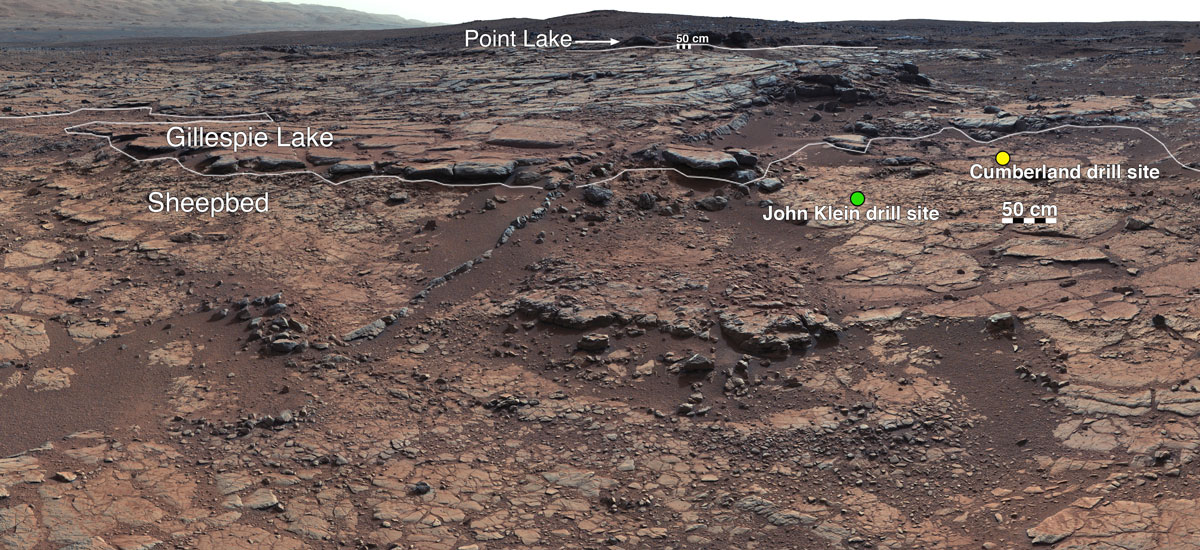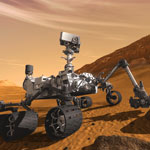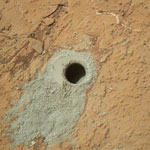Ken Farley
From KISS to Curiosity to Mars 2020
Ken Farley, Caltech’s W.M. Keck Foundation Professor of Geochemistry, uses geochemical techniques to understand the sequence of events that shape the landscapes around us. “For most of my career, I was involved in measuring ages of rocks on terrestrial samples in my laboratory.” In 2009, a KISS workshop posed an interesting challenge: what would it take to move that laboratory to Mars? “I got involved in the question of understanding geologic time on Mars and how we might do better in the future through the KISS workshop.”

Research in the Farley lab encompasses a wide array of geological and methodological problems. Over the past twenty years, the lab members have developed techniques for understanding the low temperature cooling histories of rock masses. The (U-Th)/He method and 4He/3He thermochronometry allowed to explore thermal histories that illuminate paleotectonics, geomorphology, hydrocarbon maturation, and other processes. More recently, Farley has also begun to explore techniques such as (U-Th)/Ne dating, cosmogenic 3He and 21Ne dating, heavy noble gas geochronology, and extraterrestrial (in-situ) geochronology and surface exposure dating.
Today, our best description of Mars’ history comes from counting the impact craters that cover its surface. “Our current understanding of geologic time on Mars is largely based on images which show impact craters,” Farley explains. In a relative sense, the more craters that overlap each other in a particular area, the older that surface must be. “The abundance of impact craters tells you something about how long a surface has been exposed, but it’s not a very good way to get geologic time because it’s very hard to be quantitative. The alternative that we use on Earth in terrestrial laboratories is to use radioactive decay methods. Those are the gold standard of the way you establish geologic time.” But the delicate measurements that these techniques require are difficult to make with the tools available on a robotic mission to Mars. “This is not something I had thought about before, because if you’re working in a laboratory on Earth, you don’t usually think about things that you might do on Mars. But the KISS workshop really put this idea into my head.”
“
Thanks to the KISS workshop, I really got engaged in a kind of scientific problem that I never would have been involved in before — that is, dating of rocks on another planet.
”
Inspiration could not have struck at a better time. “By chance, just about the same time, NASA was seeking participating scientists for the Mars Science Laboratory mission, and I thought well, what the heck. I’ll put in a proposal to attempt to date rocks on Mars using instruments that are available on the Curiosity rover.” By that time, it was too late to suggest any modifications to the rover’s suite of instruments — “by the time this experiment was dreamed up, the rover was already on the launch pad ready to go” — but Farley demonstrated how existing tools could be repurposed. “The key thing you have to do if you want to date a rock using radioactive decay methods is to measure concentrations of elements and isotopes. And the instruments on board the Curiosity rover are capable of measuring potassium, and potassium has an isotope that decays to argon. There is also an instrument on board the rover for measuring argon. So by measuring the amount of potassium and the amount of argon, we were actually able to determine how long it’s been since the rocks that we analyzed were formed” — a whopping 4.1 billion years. “The kinds of techniques that I proposed to use, this decay of potassium to argon, had never been attempted before outside of Earth because they require sophisticated instruments that have never flown before. So this measurement that we made was the first time that any measurement of its type had ever been made.”

Bringing Earth-Tested Methods to Mars
As a member of the science team for Curiosity, Farley helped plan the day-to-day operations of the Curiosity rover. “This turned out to be very interesting to me — it was applying geochemistry that I was very familiar with on Earth, but to another planet.” Now the Project Scientist for the upcoming Mars 2020 mission, he will be coordinating the next rover’s search for past life on the Red Planet, including the preparation of martian rock samples for an eventual return trip. “This is something scientists have wanted to do for decades.”

Farley is a participating scientist with the Mars Science Laboratory (MSL) mission where he aims to implement surface exposure and radiometric dating methods on Mars using the MSL rover’s onboard analytical suite. Farley is currently performing a series of diffusion experiments on mineral phases expected at Gale Crater to determine light noble gas retentivity. Light noble gases (He, Ne, Ar) carry the ability to provide insight into Mars’ history. Isotopes of these gases produced by cosmic ray reactions in the upper few meters of Mars’ surface can provide a quantitative understanding of Mars’ history that has never been achieved. The determination of cosmogenic noble gas concentrations can determine ages of youthful features such as impact craters, landslides and young basalts.

Upon landing, all noble gas measurements will be performed by the Sample Analysis at Mars (SAM) suite onboard the MSL rover. Solid sample will be transferred to SAM, thermally released, purified, and analyzed in static mode on the quadrupole mass spectrometer. The APXS instrument will provide bulk composition data where needed. In addition, Farley and his team have been using the Pfeiffer Prisma quadupole at Caltech to cross check the capabilities of SAM.
Tackling Big Challenges Together
The impetus provided by that initial KISS study kickstarted an entirely new avenue of research for Farley. “Thanks to the KISS workshop, I really got engaged in a kind of scientific problem that I never would have been involved in before — that is, dating of rocks on another planet.” And those earth-tested techniques are poised to revolutionize our understanding of geologic time on Mars. “Through that engagement, I now am project scientist for this Mars 2020 mission. It completely changed the scientific direction of my career for the next, at least ten years. I’m going to be focused on a rover mission on Mars — very different than what I was working on before.”
“
One of the great things about KISS is it allows you to develop really good ideas in collaboration with other people and then move forward. It allows scientists who are very busy and very focused on whatever it is that they are doing individually to come together and take on bigger problems than they usually work on, with the potential for resources to actually pursue interesting ideas that come out the conversation.
”
Ken Farley